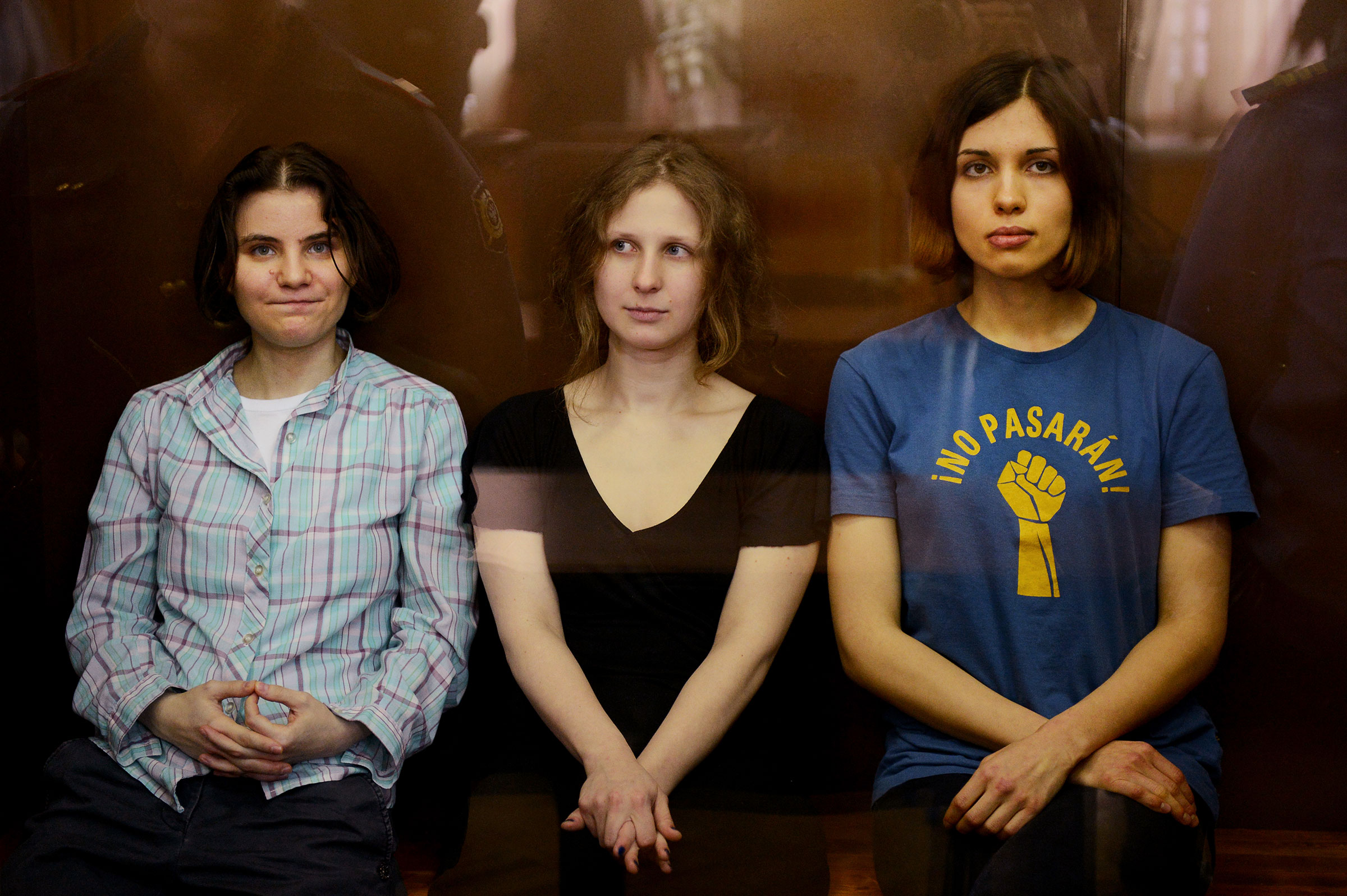With colorful ski masks, explicit lyrics and mosh pit–ready dance moves, the feminist collective known as Pussy Riot grew out of the protest movement that peaked in Moscow in early 2012, the first street-level challenge to the reign of Russian President Vladimir Putin.
The group’s viral videos mixed punk rock and performance art into a powerful form of rebellion, and it became an icon of the anti-Putin movement when three of its members were put on trial that summer. The charges against them were “hooliganism motivated by religious hatred or hostility.” Their crime was a performance, which they called a “punk prayer,” near the altar of Moscow’s Cathedral of Christ the Savior. Its title was “Virgin Mary, chase Putin away!”
Two of them—Nadezhda Tolokonnikova, 22, and Maria Alyokhina, 24—were sentenced to three years in prison for the stunt. (Yekaterina Samutsevich received a suspended sentence.) Their public show trial forced a reckoning in Russia, an era-defining clash between Putin and a new generation of his subjects, who were rising up against his version of autocracy and demanding democratic change. That moment hasn’t arrived yet, but Pussy Riot’s message of defiance still inspires young women in Russia and far beyond. —Simon Shuster

This article is part of 100 Women of the Year, TIME’s list of the most influential women of the past century. Read more about the project, explore the 100 covers and sign up for our Inside TIME newsletter for more.
